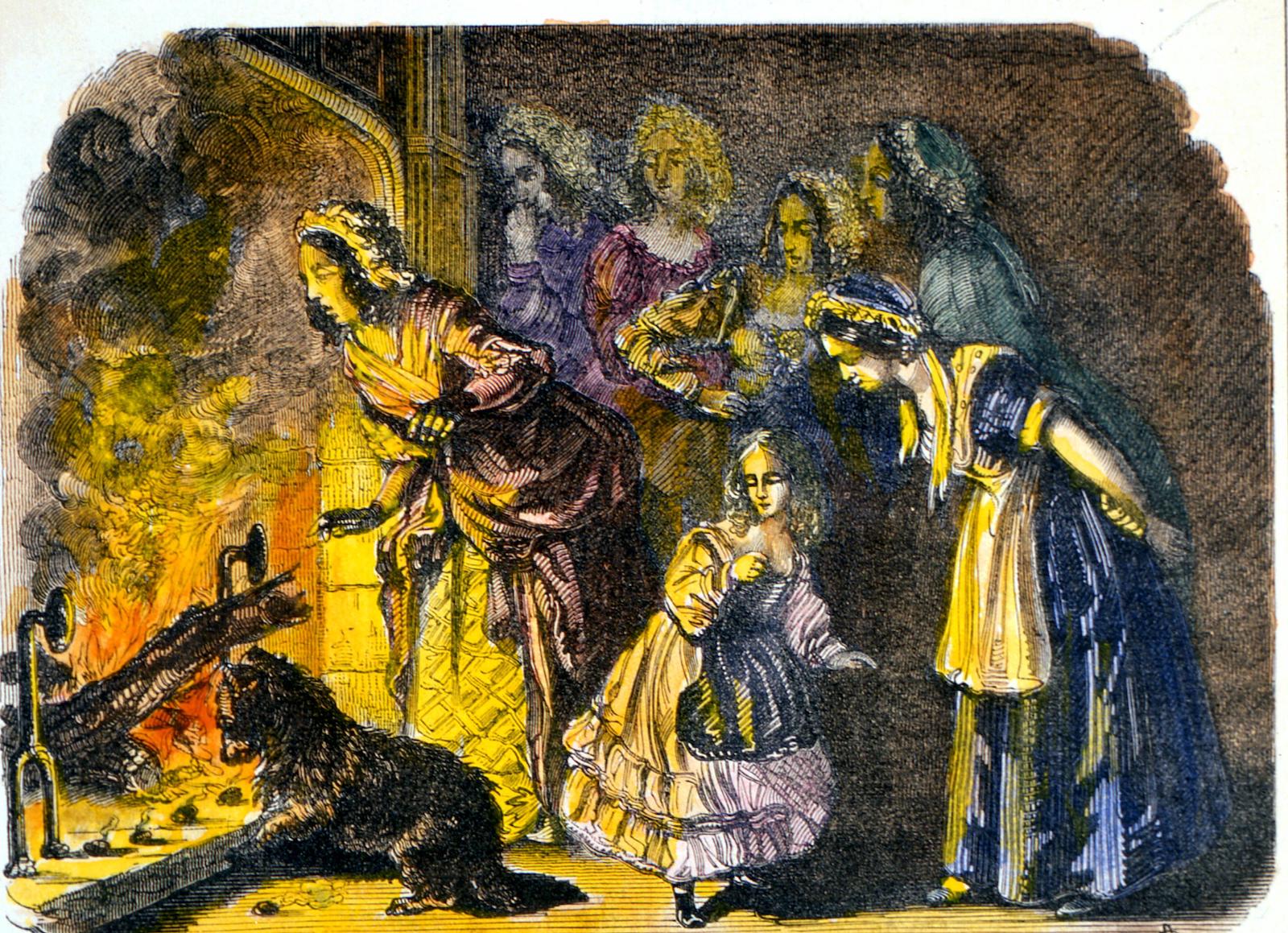Victorian Romantic Rituals and Charms - 5 minutes read
The setting is Christmas Eve, after a rollicking holiday party in North Yorkshire. While the rest of the family retires, the young woman of the house sets to work. She pulls a single mistletoe berry and leaf from the pocket where it has been stowed since her beloved kissed her under the bunch hung from the ceiling. (It was customary for couples kissing under the mistletoe in the 19th century to remove a berry each time a kiss was had. Once the berries were gone, no more kisses.) After locking the door she swallows the berry and works by candlelight to complete the charm. She pricks the initials of ‘him her heart loves best’ into the mistletoe leaf and then stitches it to the inside of her corset near her heart, where it would ‘bind his love to her so long as there it remains’.
Though varying in exact details, similar rituals would have been taking place in homes across England on Christmas Eve. The mid-19th century saw a resurgence in popularity of such traditions and divinations. Once seen as witchcraft, magic and superstition, divination rituals such as these were recast as benign and appropriate entertainment for young women and girls. Though folk-wisdom had long been replete with herbalist cures, luck charms and practices to predict such things as the weather, it was predominantly romance rituals – specifically marital soothsaying – that became popular with young women, particularly among the middle and upper classes.
This rehabilitation of superstition and ritual was largely due to the collections of folk and fairy-lore published by a new group of self-fashioned folklorists in the 19th century, such as John Nicholson’s Folk Lore of East Yorkshire (1890). These were primarily men who saw themselves as collectors of disappearing English traditions in a period of rapid modernisation and globalisation. They recounted for entertainment (and instruction) the practices they found in the most isolated and rural parts of Britain. Alongside these were the so-called ‘oracles’ – popular fortune-telling books which relied on readers answering questions in order to match their responses with apocryphal quotations from classic poetry and literature. ‘The Floral Oracle’, a game described by John Ingram in 1874, taught readers to predict their future husbands’ personalities based on flower types (red rose for ‘affectionate’, daisy for ‘gentleness’ and primrose for ‘simplicity’) or their profession (lily for ‘nobleman’, thistle for ‘soldier’, oak leaf for ‘farmer’ and cypress for ‘doctor’). Divinations could be as simple as sleeping with rosemary or ‘churchyard yew’ under one’s pillow in order to dream of a future husband, or peeling an apple into a single strip which would reveal the shape of a suitor’s initial. There were also such standbys as ‘he-loves-me-he-loves-me-not’.
Botanicals could be used to send cryptic messages to attract the opposite sex: in 1893 Christabel Wilkinson confided in her best friend Hilda that she had ‘scattered thought + prudence to the wind’, took out her book ‘with the meanings of flowers + sent [Edmund] a little message all in flowers’. However, they could also be much more intricate. One ritual, intended to conjure the apparitions of their future husbands, required three girls on Midsummer’s (or sometimes St Agnes’) Eve making intricate potions by collecting rosemary sprigs and roses in basins and then drawing magic lines around the vessel, before throwing their chemises into the centre.

Botanicals were also used to help choose between a slew of suitors. One game involved girls naming chestnuts after men and then roasting them
on a fire: ‘If a nut cracked and jumped away from her then the suitor with that name would not be true; the one that stayed and was burnt alongside the chestnut with her name would remain true and they would consequently marry.’ In September 1890 Maud Berkeley, aged 29 and living on the Isle of Wight, and her sister attempted a similar divination which she recorded in her diary: ‘dropped … hazelnut, into the fire’, which, to her disappointment, ‘chose to “burn and die” instead of “crack and fly” as it ought to have done’. She came to the conclusion that ‘such practices were mere nonsense’ – but that did not stop her continuing to play them.
From rituals which would reveal future husbands, to those which attracted and ensnared a particular mark, these games show us young women and girls who were not passive in courtship. Indeed, despite their popularity we know that at least some of these practices were considered transgressive, some being discouraged by parents who held their own superstitions. It is recorded, for instance, that many believed that honeysuckle brought indoors would give their daughters erotic dreams.
For the young women for whom these books were written, sneaking out of bed and traipsing through churchyards together – usually at the prescribed witching hour of midnight, plucking ‘yarrow from a young man’s grave’ in order to bind unknowing men to them for all eternity – these rituals were not nonsense; nor were they trivial. Marriage was the central focus of a girl or young woman’s life and these practices speak to deep anxieties and the precarity of their lives; books promised ‘hope for the unmarried’ or to save them from ‘dying old maids’. These divinations let them experiment with agency. They also show a playfulness – even a touch of rebellion – which is often absent in histories of courtship and romance in this period. They let us into the secret spaces where young women dreamt up futures and tried to make them real.
Maggie Kalenak has recently completed a PhD on romantic culture in 19th-century England at the University of Cambridge.
Source: History Today Feed